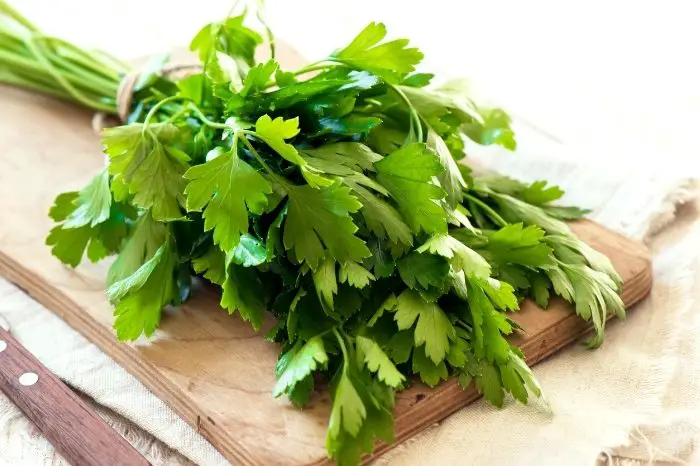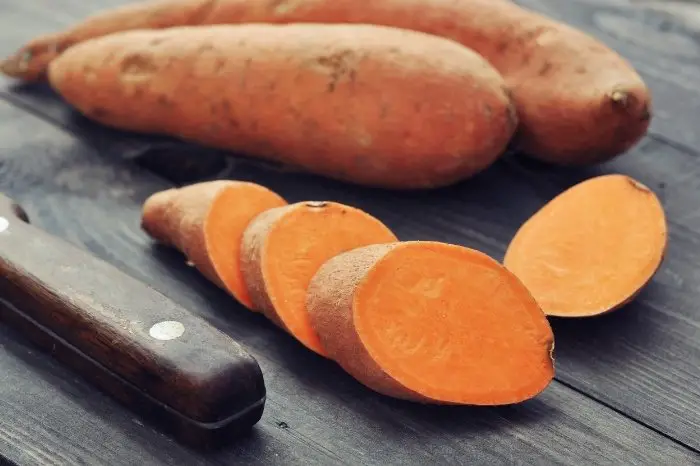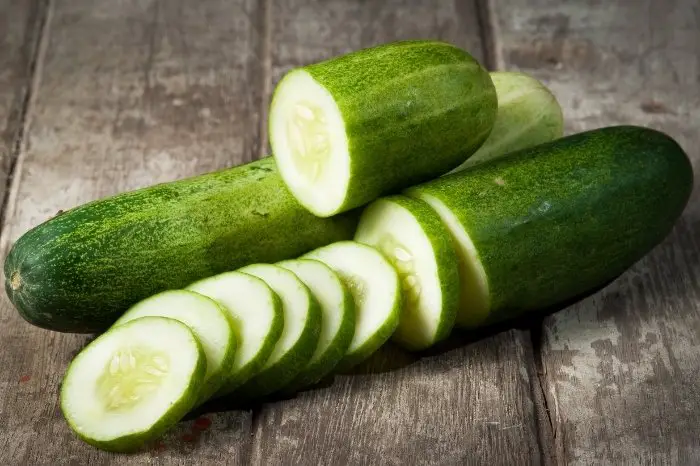Last Updated on January 19, 2023
Vegetables are an important part of people’s diets. There is a large variety of vegetables, including non-cruciferous and cruciferous. This post will share a list of non-cruciferous vegetables that will make a great addition to your garden.
There are many great non-cruciferous vegetables that not only taste good but are also packed full of many important nutrients. They are great to incorporate into your diet daily. In addition, many of them are great for growing in your home garden.
Cruciferous Vs Non-Cruciferous Vegetables
If you are an avid gardener, you may have heard of the terms cruciferous vegetables and non-cruciferous vegetables. However, many people are unfamiliar with the two terms.
Cruciferous vegetables belong to the Brassicaceae family of plants and are native to Europe and the Medderteranian, along with the temperate regions of Asia. These leafy green vegetables are low in calories and high in nutrients. Oftentimes they are particularly high in fiber, vitamin A, vitamin C, and also vitamin K.
Many cruciferous vegetables contain glucosinolates, which exhibit cancer-fighting properties. In addition, they improve heart health, aid in weight loss, and reduce inflammation. Common cruciferous vegetables include brussels sprouts, broccoli, kale, cauliflower, radish, turnip, arugula, and bok choy.
However, cruciferous vegetables can lead to thyroid problems in some people, particularly when eaten raw. For those with thyroid problems, it is best to stick with non-cruciferous vegetables. There are a large variety of non-cruciferous vegetables that are full of important vitamins and also nutrients.
Complete List Of Non-Cruciferous Vegetables
Non-cruciferous vegetables can be grown all throughout the world. They are a popular choice among many people, whether they have thyroid problems are not. Many of them are great for snacking, salads, smoothies, sauteing, boiling, or however else you would like them prepared.
Here is a list of non-cruciferous vegetables you should have in your kitchen. Many of them are also great to grow in your own garden as well.
Spinach
Spinach is a popular vegetable thanks to its versatility and health benefits. It is loaded with nutrients as well as antioxidants and is excellent for salads and also sauteing.
Parsley
Parsley has many benefits including helping with high blood pressure, allergies, and also inflammatory diseases. It is a wonderful vegetable to use as a garnish or topping in sandwiches, salads, pasta, and salad dressings.

Beets
Beets are packed full of manganese, fiber, vitamin C potassium, folate, and also iron. They are a wonderful vegetable to roast or even pickle.
Cilantro
Cilantro is an herb that many use in salsas, guacamole, soups, and as a garnish for meats. It provides significant dietary fiber, calcium, iron, magnesium, and manganese.
Lettuce
Lettuce is one of the most popular vegetables thanks to its health benefits and versatility. Many different varieties are great for salads, wraps, toppings, and more.
Wheatgrass
Wheatgrass is an excellent source of antioxidants, nutrients, minerals, and also vitamins, especially vitamins A, C, and E. Many people add wheatgrass to their smoothies as it blends well and has a mild taste.
Moringa
Moringa is popular for its numerous health benefits, including its high levels of vitamin C and potassium. It can come in a powder form that can be used to make tea and in addition, smoothies.
Greens Powder Smoothie Mix | Purely Inspired Organic Greens Powder Superfood
Dandelion
Though many people just think of dandelion as a weed, it comes with many health benefits. Sometimes used in herbal medicine, dandelions have antioxidants and can also fight inflammation, lower cholesterol, and regulate blood sugar.
Chicory
Chicory comes with many health benefits and is a common remedy for helping with liver and heart health, as also constipation. Many people use it as a spice and in some cases, people will also add it to coffee grounds.
Carrots
Carrots are one of the most popular vegetables to eat and many people also enjoy growing them in their gardens. They are rich in vitamin A, antioxidants, vitamins, minerals, and fiber.
Green Beans
Green beans come in many different varieties and are enjoyed in many different ways. These tasty greens are high in vitamin K and calcium.
Sweet Potatoes
Delicious and nutritious, sweet potatoes are rich in fiber and antioxidants. People enjoy them in many ways including baked, fries, casserole, mashed and roasted.

Ginger
Ginger is one of the healthiest and most popular spices in the world, as it contains antioxidants and can aid in nausea, weight loss, and heart health. It is popularly used as a spice in baking and also cooking.
Garlic
Many people love the strong taste of garlic, making it popular in many savory dishes. It is a good source of manganese, vitamin B6, vitamin C, fiber, and also selenium.
Asparagus
Asparagus is a good source of fiber that also helps with digestive health, as well as reducing the risk of heart disease and high blood pressure. Many people enjoy growing it in their own gardens and then grilling or roasting it.
Peas
Peas come in wide varieties and people often enjoy incorporating them into different savory dishes. They are a good source of vitamins C, vitamin E, zinc, and antioxidants.
Cucumbers
Many people enjoy growing cucumbers and then eating them in salads or as pickles. These crunchy veggies are high in antioxidants and promote hydration.

Celery
Celery is a good source of vitamin A and vitamin C and makes a great low-calorie snack. It can be eaten raw or added to soups, stews, and chilis.
Can Cruciferous Vegetables Cause Headaches?
There is no evidence suggesting that cruciferous vegetables cause headaches. On the contrary, these veggies are really healthy! Broccoli, cabbage, and cauliflower are excellent sources of vitamins C and K and dietary fiber.
However, they can lower your estrogen levels. A fast decrease in estrogen can disrupt your hormones, leading to symptoms like headaches. Eating a lot of these vegetables can also cause bloating and gas. This pain might lead to a headache for some people. But it’s not common.
You should speak to your doctor if you experience headaches after eating cruciferous vegetables. There might be an underlying cause.
Are Cruciferous Vegetables Complex Carbohydrates?
Cruciferous vegetables are complex carbohydrates. Carbs form when carbon dioxide and water combine during photosynthesis. Green cruciferous vegetables, like broccoli, cauliflower, and brussels sprouts, contain plenty of this. They are part of the Brassica family hosting veggies that are also rich in vitamins, minerals, and fiber.
You should include a variety of cruciferous vegetables in your diet. Complex carbs are more filling and nutrient-packed. They also aid in weight loss and keep blood sugar levels balanced. Your energy levels will be steadier, and you’ll have an easier time functioning throughout the day if you include cruciferous veggies in your diet.
Can Cruciferous Vegetables Cause Diarrhea?
Cruciferous vegetables contain plenty of whole carbs. One such is raffinose, and many people have difficulty digesting it. If you aren’t used to eating a lot of carbs and fiber, your digestive tract can have trouble processing it.
Undigested fiber and carbs like raffinose can cause bloating, gas and diarrhea when it reaches the large intestine.
Are Cruciferous Vegetables High in Potassium?
Cruciferous vegetables are a good source of potassium. It’s essential to include these in your diet. Eating cruciferous veggies daily will ensure your body gets all the nutrients it needs. Healthy adults should consume about 4,700 milligrams of potassium per day. Here’s a list of potassium-rich cruciferous vegetables:
- Broccoli – contains approximately 316 milligrams of potassium per 100 grams
- Bok Choy – has about 176 milligrams of potassium per 100 grams
- Brussels Sprouts – contains roughly 389 milligrams of potassium per 100 grams
- Cabbage – contains about 170 milligrams of potassium per 100 grams
- Kale – has approximately 491 milligrams of potassium per 100 grams
How Long Does it Take to Digest Cruciferous Vegetables?
The time it takes for food to digest varies depending on multiple factors. The type of food, your digestive system, and how much you’ve eaten influence this. Whether you ate the food raw or cooked also makes a difference.
Cruciferous veggies are high in fiber. You might think this makes it easier to digest, but most people find it more difficult. It can take a little longer for these to pass through your digestive system compared to other types of food.
Leafy cruciferous vegetables like broccoli, brussels sprouts, cabbage, cauliflower, and kale can take up to 50 minutes to digest when you eat them cooked. If you chew down on them raw, they can take even longer!
Delicious and Nutritious Non-Cruciferous Veggies
Several delicious non-cruciferous vegetables are great for incorporating into your diet. They are a particularly good option if you struggle with thyroid problems. Many of them are great for growing in your very own home garden.
Non-cruciferous vegetables come in a wide variety, from sweet potatoes to spinach. Many of them are also great to prepare in a variety of different ways.
Do you have any questions regarding this list of non-cruciferous vegetables? If so, please ask any questions regarding non-cruciferous and cruciferous vegetables in the comment section down below.
FAQs
Is spinach considered a cruciferous vegetable?
“Crucifer" refers to plants in the family Cruciferae, which is made up of broccoli, brussel sprouts, cauliflower, kale, collard greens, and cabbage. Spinach doesn't fall into this category.
Is lettuce considered cruciferous?
It's a member of the brassica family, which is also known as Cruciferae, along with cabbage and broccoli. Brassica is the name of the family, not the name of the individual plants. The family includes broccoli, cabbage, cauliflower, kale, mustard, radish, turnip, and horseradish, among others.
Cruciferous vegetables contain indoles (flavonoids) and glucosinolates (plant chemicals), which help protect against cancer.
What is the healthiest cruciferous vegetable?
The healthiest cruciferous vegetable is cauliflower. The reason for this is that cauliflower contains more phytochemicals than broccoli, brussel sprouts, kale or cabbage, and the nutrients are better absorbed into the body. Cauliflower is rich in antioxidants called sulforaphanes. These help protect your cells against damage from free radicals (unstable molecules).
Free radicals are produced as a byproduct of normal metabolic activity. The good news is that sulforaphanes can be converted into other antioxidants which may have even greater anti-cancer effects. They also help prevent cancer by supporting the body’s immune system. Cauliflower is rich in vitamin K, folate, and vitamin C, all of which support the immune system and promote cell growth. It also contains more fiber than any other cruciferous vegetable. Cauliflower is a good source of calcium, magnesium and potassium, which help build strong bones and muscles. It also contains vitamin B6, an important nutrient for the production of red blood cells. Vitamin B6 has been shown to reduce the risk of heart disease. Cauliflower also contains choline, a B vitamin that is important for normal nerve function. Choline is also a natural pain reliever.
Is it safe to eat cruciferous vegetables every day?
Yes, it is safe to eat cruciferous vegetables every day. This includes broccoli, cauliflower, cabbage, kale, brussel sprouts, and bok choy. You should continue eating these foods even if you are taking supplements or herbal remedies.
There are two types of cruciferous vegetables: Brassicas (cabbages, broccoli, kale, cauliflower) and Cruciferae (mustard greens, arugula, chives, radishes).
You can also find them at the store as part of a salad mix or in a Chinese stir fry. They are also very common in cooking, especially in Asian dishes. The major phytonutrients in cruciferous vegetables are glucosinolates and indole-3-carbinol (I3C). The main glucosinolate found in broccoli is sulforaphane. Sulforaphane is an antioxidant that protects cells from damage caused by free radicals. It also has anticancer properties. Sulforaphane is converted into I3C by the enzyme myrosinase which is present in both the Brassicas and Cruciferae vegetables.

Anna is an avid gardener who loves the outdoors and spending time in nature. She has been gardening since she was a child and has a passion for growing her own food and flowers. She enjoys experimenting with different types of plants and techniques to create beautiful and bountiful gardens. She is always trying to learn more about gardening and is an active member of her local gardening club. She loves to share her knowledge and experience with others and is always willing to lend a helping hand. Anna believes that gardening is a great way to bring people together and foster a sense of community.

